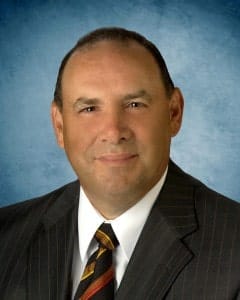The health care industry represents over 17% (1/6) of our Gross National Product in the United States, yet is one of the most complex and controversial businesses to operate.
Overhead for a physician practice has increased substantially over the past 15 years. With reimbursements dropping, malpractice costs rising and salaries for employees increasing, the overhead percentage increase for a physician practice has outpaced the consumer price index significantly. This means that physicians are working the same or harder for substantially less money than they did 15 years ago.
Most physicians believe that their practice’s overhead is somewhere between 40% and 50% of their charges. The truth is that in today’s medical practices, it is actually between 60% and 70%.
The reasons? In the past 15 years, health insurance costs for employees rose over 200%. Reimbursements from third-party payers decreased substantially. Technology has become much more expensive. Documentation for malpractice purposes has caused physicians to do more paperwork. The billing process to third-party payers has become much more complicated. Physicians have been forced to hire more staff. With all of these changes, some physicians have taken a 50% cut in pay – or more.
For example, in 1996, a physician may have had $900,000 in charges. With the reimbursement rate at 60%, he or she would have received $540,000. Deducting total overhead expenses of 44%, or $240,000, leaves his or her salary at $300,000, or 33% of the charges. That same physician in 2011 had charges of $1.4 million. With the reimbursement dropping to 45%, he or she would have received $630,000. Deduct overhead expenses at 68%, or $430,000, and that same physician’s salary has decreased to $200,000, or 14% of his total charges.
Part of the problem is that physicians are often thrust in to the “business management” role of their practice without receiving any or very little training in medical school about the business of health care. A great majority of physicians, especially young physicians, have very little knowledge about what it takes to operate a profitable practice.
One young physician once told me that he never wanted to be a partner in his practice. He wanted to work strictly on productivity. He said, “Just pay me 60% of my charges and I will be happy.” The example above clearly shows that physicians do not get reimbursed anywhere close to those numbers.
The sad news for physicians is that it’s not going to get any easier anytime soon. Physicians need to have the knowledge of how to manage and operate their practice and have clear understanding of what makes up overhead expenses.
Regardless of the size of the practice, physicians need to meet with a financial and business expert to help them sort out operating expenses, fixed costs, etc. A profitability analysis can assist physicians in understanding their overhead expenses and make informed decisions about what is practicable for their practice.
Samuel J. Catanese, CPA, is the leading partner of the Catanese Group, a certified public accounting and business management firm, with locations in Pittsburgh and Johnstown. Mr. Catanese has worked with physicians across the country customizing their own personal financial situation including their practice, personal assets and liabilities, and their personal income and expenses, which is a direct relationship to their physician practices. For more information, call (814) 255-8400 or email at [email protected] .
Throughout the year, our writers feature fresh, in-depth, and relevant information for our audience of 40,000+ healthcare leaders and professionals. As a healthcare business publication, we cover and cherish our relationship with the entire health care industry including administrators, nurses, physicians, physical therapists, pharmacists, and more. We cover a broad spectrum from hospitals to medical offices to outpatient services to eye surgery centers to university settings. We focus on rehabilitation, nursing homes, home care, hospice as well as men’s health, women’s heath, and pediatrics.








